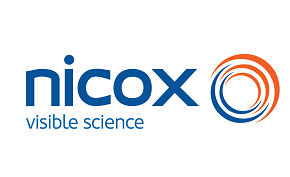Purpose:NCX 667, a novel nitric oxide (NO) donor with an isomannide core, was characterized for its IOP-lowering ability in animal models of ocular hypertension and glaucoma. Bioengineered human trabecular meshwork/Schlemm's canal (HTM/HSC) constructs were used to explore the mode of action.
Methods:Ocular normotensive New Zealand white (NZW) rabbits (ONT-rabbits), spontaneously ocular hypertensive pigmented Dutch-belted rabbits (sOHT-rabbits), hypertonic saline (5%)-induced transient ocular hypertensive NZW rabbits (tOHT-rabbits), ocular normotensive Beagle dogs (ONT-dogs), and laser-induced ocular hypertensive cynomolgus monkeys (OHT-monkeys) were used. NCX 667 or vehicle (30 µL) was instilled in a crossover, masked fashion and intraocular pressure (IOP) measured before dosing (baseline) and for several hours thereafter. The ONT-rabbits were used for cyclic guanosine monophosphate (cGMP) determination in ocular tissues after ocular dosing with NCX 667. Transforming growth factor-beta2 (TGFβ2) (2.5 ng/mL, six days)-treated HTM/HSC constructs were used to address changes in outflow facility.
Results:NCX 667 resulted in robust and dose-dependent IOP decrease in all models used. Maximal IOP-lowering efficacy at 1% was -4.1 ± 0.6, -12.2 ± 2.7, -10.5 ± 2.0, -5.3 ± 0.8, and -6.6 ± 1.9 mmHg, respectively, in ONT-dogs, sOHT-rabbits, tOHT-rabbits, ONT-rabbits, and OHT-monkeys. In ONT-rabbits NCX 667 (1%) increased cGMP in aqueous humor (AH) but not in retina and iris/ciliary body. NCX 667 concentration-dependently increased outflow facility in TGFβ2-treated HTM/HSC constructs (outflow facility, 0.10 ± 0.06 and 0.30 ± 0.10 µL/min/mmHg/mm2, respectively, in vehicle- and NCX 667-treated constructs).
Conclusions:NCX 667 leads to robust IOP lowering in several animal models. Evidence in HTM/HSC constructs indicate that the IOP reduction likely results from NO-mediated increase of the conventional outflow pathway. Other mechanisms including changes in AH production and episcleral vein pressure may not be excluded at this time.






